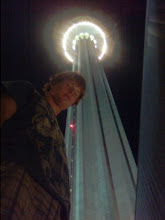Media Franchises: Big Brother
The show that I am analyzing is the reality TV game show known as Big Brother. It is an elimination style TV show where contestants live in a house that is wired with video cameras recording their every move. Usually the show is played using 15 people, who vote and choose to evict one another. At the end of the show, the last person remaining wins either a car, money, or in some cases a house. The show originated in the Netherlands and was first aired in 1999 on the Veronica TV Channel. There is no one particular company that distributes the show since it is worldwide, rights to the show are held by a company called Endemol, a TV production company based in the Netherlands that has media ties to studios in 23 other countries. Endemol is owned by the Italian media conglomerate Mediaset. The show is aired in multiple variations in multiple countries. Some of the countries include: France, Norway, UK, Germany, South Africa, and the United States.
Big Brother is a prime example of media homogenization. In every country that the program is aired in, the basic setup and the way the game is played is quite similar with having house mates voting to evict one another and then afterwards having an interview to talk about what happened, why they think they got voted off, and to talk about their experiences in general. One of the main differences that I noticed about the video clips is that Big Brother UK, Big Brother Australia, and Big Brother South Africa, is that they always had a large cheering audience and made it seem almost like a red carpet event. In the U.S. Version, you cannot hear the crowd, and it seems to be lower budget and not as flashy as it's foreign counterparts.
One of the new engines that is used in Big Brother is voting to evict other contestants out of the house. In some versions of Big Brother the audience is used to vote to evict people out of the house and also in some cases viewers at home can either phone in their votes or vote on the Internet for who they want to be evicted that week. One of the more innovative things that the TV show uses that has never been seen before is the ability for people to view live video footage through the Internet. These new “engines” give people a level of interactivity that has never been seen before on most TV programs. This level of interactivity gives people a sense of being part of the show and tends to make the viewer more interested in the show.
If you watch some clips of the show in different countries, you will notice that each show has it's own flair that follows along the lines of cultural values and norms. One of the prime examples of this is censorship and nudity. In the American, South African and Australian versions of the show, the editors of the show don't show nudity or explicit sexual content to in order to make it more of a family friendly show. The live video feed on the Internet for these shows also has a 15 minute lag time so that editors can censor or block footage from that camera if there would be some explicit content displayed. The British and German versions of the show do however broadcast uncensored raw footage, and has even gone as far as showing people engaged in sexual activity with one another. Because of the explicit content that has been broadcast in some parts of the world, countries like Greece have made an effort to have the show taken off the air due to their cultural values and norms.
I believe that the new media franchise culture can bring people together to produce a greater sense of unity while also creating a new type of fragmentation. I say that it creates greater unity because having franchised shows can create some common ground between countries. Having other countries use these different franchised shows is a great way for people to share ideas about what they feel is entertaining while giving people in other countries a small taste of what other cultures ethics and norms are like. I also believe that there is a certain small level of fragmentation that is created by people modifying the show's original format to work with their cultural norms. This is not a bad thing by any means, but it is fragmentation none the less.
Works Cited
"Big Brother (TV series)." Wikipedia.org. Wikipedia. Web. 15 Oct. 2009.
Keane, Michael, and Albert Moran. "Televisions New Engines." Eprints.qut.edu.au. Queensland University of Technology. Web. 20 Oct. 2009.
Carroll, Noel. "Art and Globalization: Then and now." Journal of Aesthetics & art Criticism 65.1 (2007): 131-43. Print.
